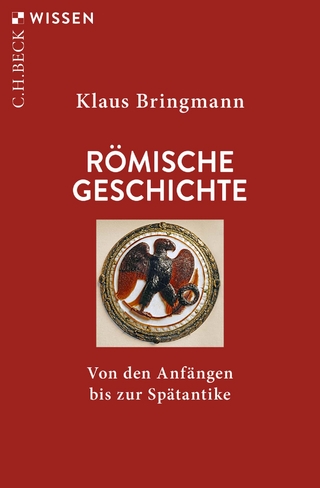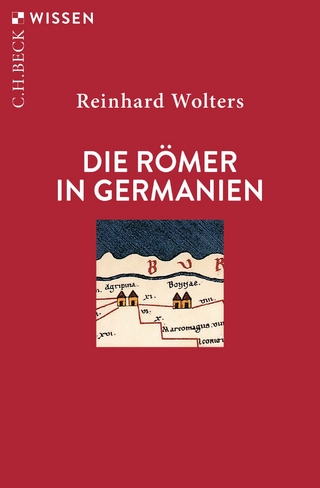
The Novel of Neronian Rome and its Multimedial Transformations
Oxford University Press (Verlag)
978-0-19-886753-1 (ISBN)
The Polish writer Henryk Sienkiewicz was awarded the Nobel Prize for literature in 1905 largely on the basis of his historical novel Quo vadis: A Narrative of the Time of Nero. The novel's vivid and moving reconstruction of religious persecution and struggle against tyranny catapulted its author into literary stardom. But, before long, Quo vadis began to 'detach' itself from the person of its author and to become a multimedial, mass culture phenomenon. In the West and in the East, it was adapted for stage and screen, provided the inspiration for works of music and other genres of literature, was transformed into comic strips and illustrated children's books, was cited in advertising, and referenced in everyday objects of material culture. This volume explores the strategies Sienkiewicz used to recreate Neronian Rome and the reasons his novel was so avidly consumed and reproduced in new editions, translations, visual illustrations, and adaptations to the stage and screen across Europe and in the United States. The contributions render visible for English-speaking readers the impact of a Polish work of high literature on the presence of Nero, Christian persecution, and ancient Rome in Western popular culture.
Monika Woźniak is Associate Professor of Polish Language and Literature at the University of Rome 'La Sapienza'. Her research has addressed issues of literary translation, children's literature in translation, and audiovisual translation. She is co-author of Historia na ekranie. Gatunek filmowy a przekład audiowizualny (History on the Screen. Cinematographic Genre and Audiovisual Translation) (Kraków, 2018). She is co-editor of Cinderella across Cultures (Wayne University Press, 2016) and the conference proceedings Quo vadis: da caso letterario al fenomeno della cultura di massa (Rome, 2016). Maria Wyke is Professor of Latin at University College London. Her research interests include the reception of ancient Rome, especially in popular culture. She is the author of Projecting the Past: Ancient Rome, Cinema and History (Routledge, 1997), The Roman Mistress: Ancient and Modern Representations (OUP, 2000), Caesar: A Life in Western Culture (Granta and the University of Chicago Press, 2007), and Caesar in the USA (University of California Press, 2012). Wyke has edited or co-edited eight volumes to date, including The Ancient World in Silent Cinema (CUP, 2013), Julius Caesar in Western Culture (Blackwell, 2006), and The Uses and Abuses of Antiquity (Peter Lang, 1999).
1: Monika Wo'zniak and Maria Wyke: Introduction
I. Literary Context
2: Jerzy Axer: The Paradoxes of Quo vadis: The Polish Classical Tradition in Action
3: Adam Zió/lkowski: Sienkiewicz and the Topography of Ancient Rome. The Riddle of Ostrianum in Quo vadis
4: Ewa Skwara: Costumes in Henryk Sienkiewicz's Quo vadis and Their Literary and Painterly Sources
5: Ruth Scodel: Quo vadis and Ancient Rome in the United States, 1896-1905
6: Comparing the Reception of Quo Vadis and Ben-Hur in the United States, 1896-1913
II. Quo vadis up to the Second World War
7: David Mayer: Quo vadis on the stage
8: Stella Dagna: Dangerous Liaisons: Quo vadis? (1913, dir. Enrico Guazzoni) and the Previous Theatrical Adaptations of Sienkiewicz's Novel
9: Maria Wyke: Word and Image: Competitive Adaptation in the Feature Film Quo vadis? (1913)
10: Raffaele De Berti & Elisabetta Gagetti: Illustrating Quo vadis in Italy (1900-1925): Between Cultivated Tradition and Popular Culture
11: Ewa Górecka: Horror amid Sweetness: Kitsch and the Intertextual Strategies of Quo vadis Postcards
III. Quo vadis post the Second World War
12: Jonathan Stubbs: 'A more permanent world': Quo Vadis (1951), Runaway Production, and the Internationalisation of Hollywood
13: Martin M. Winkler: M-G-M's QVO VADIS: From Historical Fiction to Screen Spectacle
14: Monika Wo'zniak: 'O omnivorous powers, hail!': Film Dialogue in Quo Vadis (1951)
15: Monica dall'Asta and Alessandro Faccioli: Ursus as a Serial Figure
16: El:zbieta Ostrowska: The (In)discreet Charm of the Romans: Quo vadis (dir. Jerzy Kawalerowicz, 2001)
| Erscheinungsdatum | 24.02.2021 |
|---|---|
| Reihe/Serie | Classical Presences |
| Verlagsort | Oxford |
| Sprache | englisch |
| Maße | 165 x 240 mm |
| Gewicht | 720 g |
| Themenwelt | Geschichte ► Allgemeine Geschichte ► Altertum / Antike |
| Geisteswissenschaften ► Sprach- / Literaturwissenschaft ► Anglistik / Amerikanistik | |
| Geisteswissenschaften ► Sprach- / Literaturwissenschaft ► Literaturgeschichte | |
| Geisteswissenschaften ► Sprach- / Literaturwissenschaft ► Literaturwissenschaft | |
| ISBN-10 | 0-19-886753-0 / 0198867530 |
| ISBN-13 | 978-0-19-886753-1 / 9780198867531 |
| Zustand | Neuware |
| Informationen gemäß Produktsicherheitsverordnung (GPSR) | |
| Haben Sie eine Frage zum Produkt? |
aus dem Bereich


